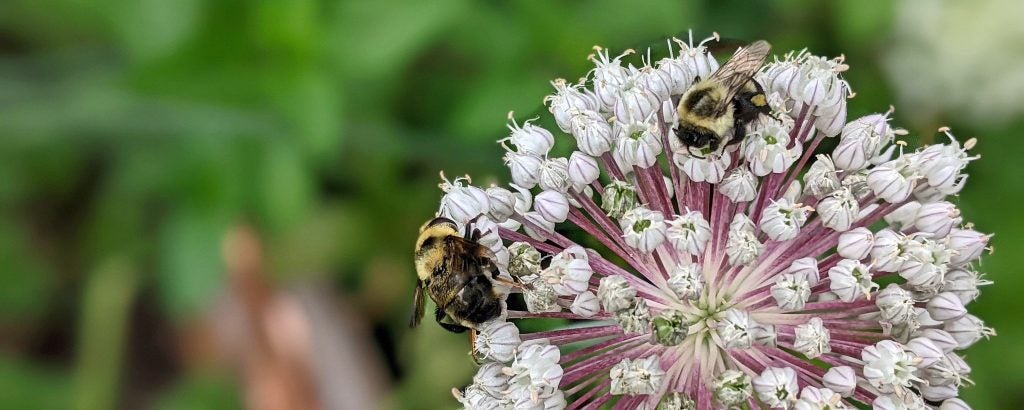From Bug News
by Erika Tucker, former Assistant Research Scientist and Collection Manager of Insects, University of Michigan Museum of Zoology

One of these things is not like the other … One of these things is just pretending … Can you tell which one is the bee and which on is the bee mimic?
This is one of the very best bee mimics I’ve seen. I was super excited (and really lucky!) to actually manage to get a decent picture of BOTH the mimic and the bee in the same frame. Hooray 😄!
The fuzzy looking critter on the right is the real bee, the Common Eastern Bumble Bee, Bombus impatiens, while the fuzzy looking critter on the left is an imposter! This imposter is actually a type of fly! This is the Hairy-eyed Mimic, Mallota posticata, in the taxonomic family Syrphidae (Hover Flies).
This type of mimicry, where a benign organism pretends to be a harmful organism, is called Batesian mimicry. By mimicking the bumble bee, the fly gains protection and is less likely to be eaten. Because what predator wants to risk getting stung by a bumble bee instead of just eating something else that doesn’t sting? If I were a bird, I’d sure go for the non-stinging bugs. To really make the ruse believable, not only does this fly mimic the way the bumble bee looks, it also mimics the way it acts and hangs out in the same places! Talk about dedication to the act.


